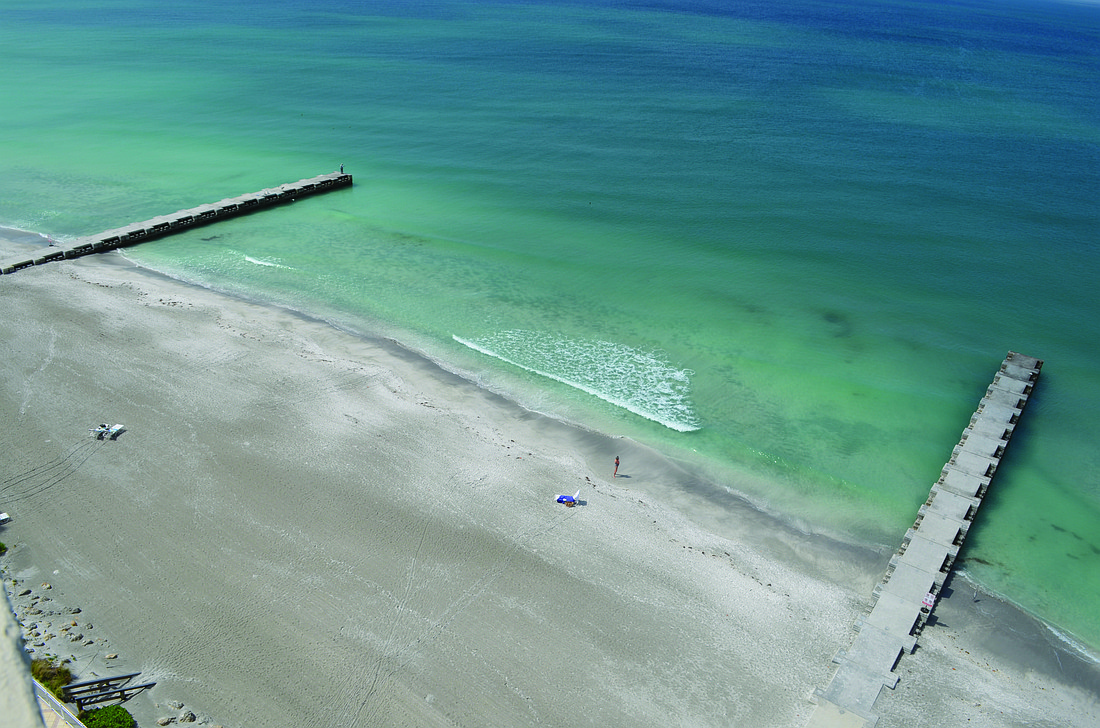- April 23, 2024
-
-
Loading

Loading

Town Manager Dave Bullock has no idea how long it will take to obtain state and federal permits to build sand-saving groins on the north end. But, whenever that happens, it will probably be at least six months before the town secures a contractor for the beach project.
Whenever that is, it’s not soon enough for residents of the 88-unit Longbeach Condominium, who told commissioners at their Tuesday regular workshop that the beach surrounding the property is rapidly eroding. The residents filled commission chambers for the workshop, which included a beach project update from consultant Olsen Associates Inc.
Adding to their concerns was a settlement the commission reached last week with former Manatee County Commissioner Joe McClash and the Manatee-Sarasota Sierra Club in their challenge of the project.
The town agreed to hold off on applying for permits for a terminal adjustable groin on Beer Can Island for at least five years. In return, McClash and the Sierra Club agreed to drop their challenge to two north-end permeable adjustable groins so that the town can finish its permitting process.
Longbeach condo resident Bob Appel told the commission the community is discussing extending its seawall to protect its property.
“I’d like you to protect our property as it stands,” Appel said. “If it’s going to be out to 2016, we’re probably going to have to spend $600,000 or $700,000 of our own money. We’d like to send you the bill.”
Becky Jones said she returned to her condo this month after being away for five weeks and saw a major decrease in beach width in those five weeks.
“I just don’t get the idea here that anyone has a sense of urgency,” she said.
But Mayor Jim Brown objected to Jones’ remarks, arguing that the town has no control over the permitting process.
“We’re trying to get it done in a situation that’s so fraught with delays,” Brown said.
Bullock also addressed questions about the town’s sense of urgency: The town placed $4 million worth of sand in a 2011 emergency beach project to protect Longbeach, which has seawall protection, and 360 North condominium, which does not have a seawall. In 2012, Tropical Storm Debby washed away the remaining sand from that project.
“Any more sand we place on the beach today is just going to be gone in a short amount of time,” he said.
The town began seeking permits more than two years ago. Both the challenge from McClash and last year’s federal government shutdown delayed the process further.
Bullock said protecting both condominiums is the sole purpose of two groins at the north end.
Commissioner Lynn Larson requested the commission discuss helping Longbeach condo owners with the costs of extending its seawall for protection to a future workshop agenda.
“The last time I saw those condos, they looked like they were close to being in the water, not near the water,” Larson said.
The discussion about groins followed a technical presentation from Olsen Associates Inc.
Kevin Bodge, senior vice president of Olsen Associates, declined to address specifics about the groins, citing the need to formally resolve challenges.
Bullock said he directed the firm to assume the town would get approval for sand structures in preparing the report.
The report showed sand loss averaging 16 feet on beaches Key-wide as the result of Tropical Storm Debby, with losses as high as 45 feet on the north end. Between the storm that occurred in late June 2012 and July 2013, the Key lost an average of 3 feet of beach, with losses of approximately 50 feet on the northern most part of the Key.
Much of the Key gained beach, with sand loss concentrated on four “hot spots:’’ the northern-most tip, the area surrounding Gulfside Road, the Islander Club and an area at the south end. The most severe losses occurred in the north-end areas.
The commission reached consensus to direct town staff to work with Olsen Associates to craft a beach project plan that includes placing the two groins and sand on the north end of the Key once permits are obtained. Olson presented five project scenarios with costs of $16 million to $39 million each. Taxpayers already approved a project up to $16 million. The cost for sand and three groins on the north end a couple of years ago was estimated at $7.5 million.
Contact Robin Hartill at [email protected]